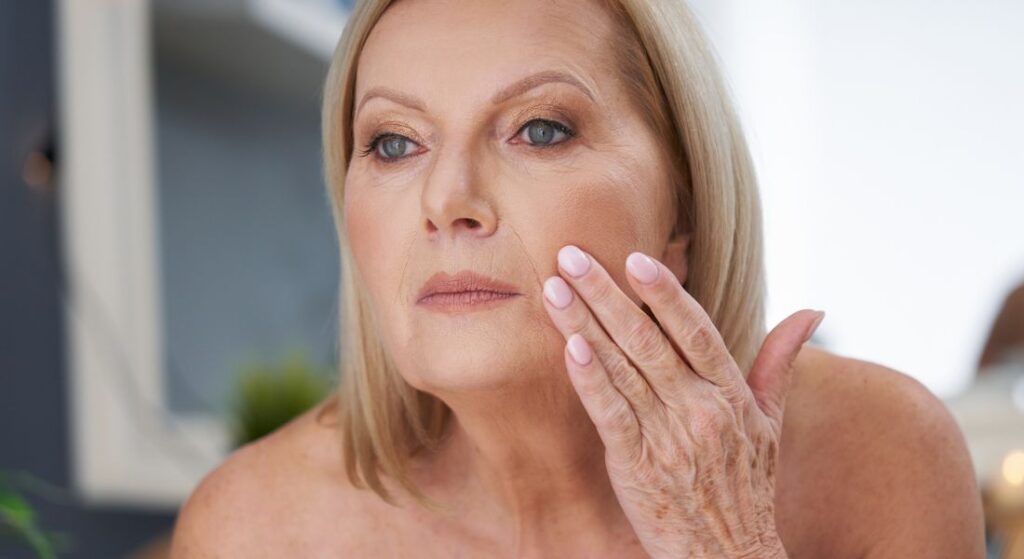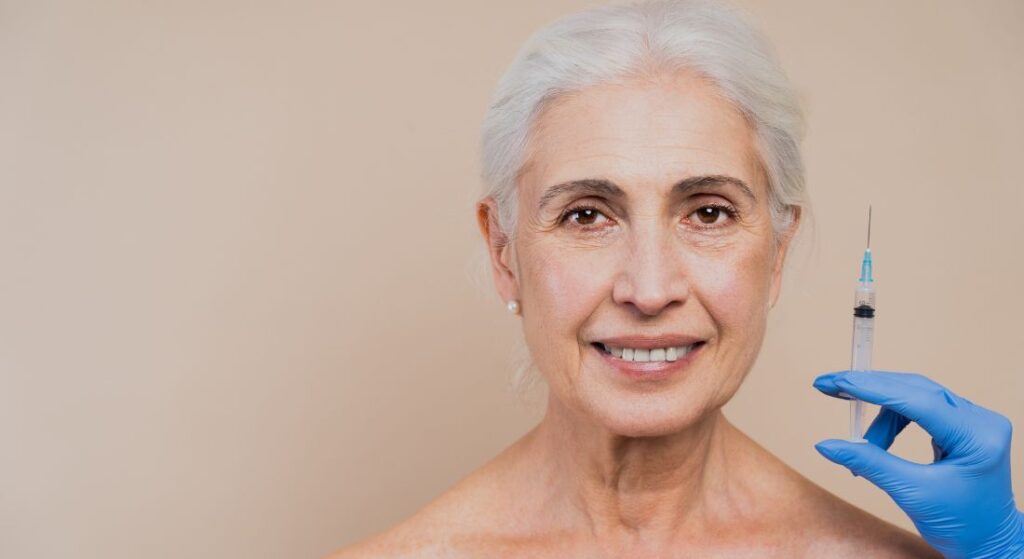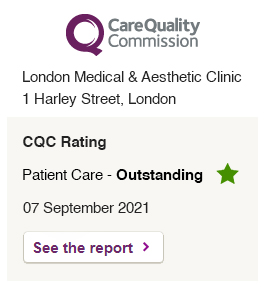
If you’ve been exploring injectable treatments, you’ve probably come across Sculptra. Unlike traditional fillers that simply add volume, Sculptra works by stimulating your body’s natural collagen production.
You might be wondering, “Is there a perfect age to start?” The answer isn’t as straightforward as you might think. It’s not just about how old you are it’s about the condition of your skin, how much volume you’ve lost, and what kind of results you’re hoping to achieve. Some people start earlier to prevent signs of aging, while others use it later to restore areas that have already lost fullness.
The great thing about Sculptra is that it can be tailored to your needs. Your provider will assess your skin’s texture, elasticity, and overall health to recommend the best approach. That means even if you feel “too young” or “too old,” there could still be a way to benefit from treatment safely and effectively.
By the end of this article, you’ll understand what experts recommend, how age factors in, and why focusing on your skin’s quality often matters more than the number of birthdays you’ve celebrated.
Understanding How Sculptra Works

Collagen Boosting, Not Just Filling
Unlike traditional hyaluronic acid fillers, Sculptra doesn’t give instant results. Instead of simply plumping up lines or wrinkles, it works with your body to stimulate natural collagen production. Over time, this gradual process helps your skin look fuller and more youthful without appearing “done.”
You’ll notice the difference slowly, which is part of the appeal. The results develop over a few months, giving you a subtle, natural improvement rather than a dramatic overnight change. This makes Sculptra ideal if you prefer a more organic, long-lasting effect.
Preventive and Corrective Benefits
Sculptra isn’t just for fixing what’s already there; it can also help prevent future changes. If you’re starting to see early signs of ageing, using Sculptra can slow down the development of wrinkles and sagging before they become more noticeable.
At the same time, it’s effective for corrective purposes. If you’ve already lost volume in areas like the cheeks, temples, or jawline, Sculptra can restore that youthful fullness. Essentially, it adapts to your skin’s needs, whether you want to maintain or rejuvenate your appearance.
The Ideal Age Range for Sculptra
In Your Late 20s to Early 30s: Prevention Stage
Even in your late 20s and early 30s, your collagen production is starting to slow down, even if you don’t see obvious wrinkles yet. You might notice subtle changes in skin firmness or texture, and this is often the perfect time to think about prevention.
Choosing Sculptra at this stage can help you stay ahead of the natural ageing process. By boosting collagen early, you can maintain a youthful look for longer and potentially delay the need for more intensive treatments later on.
In Your Late 30s to 40s: Early Correction
For many people, their late 30s to 40s is when volume loss becomes more noticeable. Cheeks may appear slightly sunken, temples less full, or the jawline starting to lose definition. You might also notice fine lines beginning to form around the mouth or under the eyes, which can subtly age your appearance over time.
Sculptra can gently restore these areas, rebuilding structure naturally. The gradual collagen boost means your results last longer than many traditional fillers, giving you a refreshed look without appearing overdone. This makes it a great option if you want improvements that feel natural and not “overfilled.”
In Your 50s and Beyond: Restoring Volume
Once you reach your 50s or 60s, it’s common to experience more significant volume loss and sagging. The cheeks may look hollow, the jawline less defined, and skin around the eyes and mouth can start to droop.
This is when Sculptra can make a noticeable difference, restoring fullness and facial contours. You may need more sessions to achieve your ideal results, but the outcome is often very satisfying. By stimulating your own collagen, Sculptra provides a long-lasting, natural-looking improvement even at this stage of life, helping you regain a rejuvenated, balanced appearance.
Why Skin Condition Matters More Than Age

Collagen Quality Varies
Not everyone’s skin ages at the same rate, and that’s something you’ll quickly notice if you compare friends or family members. Factors like genetics, sun exposure, diet, and even your daily skincare habits all play a role in how quickly your collagen breaks down.
Because of this, your skin’s condition can be a much better indicator of when to start treatments like Sculptra than your chronological age. Two people of the same age can look very different depending on how well they’ve cared for their skin over the years.
Individual Assessment
For example, a 45-year-old who has consistently protected their skin from the sun, eaten well, and followed a healthy lifestyle may have firmer, more youthful-looking skin than a 35-year-old who has had high UV exposure or neglected skincare.
This is why a personalised consultation is so important. Your provider can assess your skin’s elasticity, volume, and overall health to recommend the right timing and treatment plan specifically for you rather than relying on a generic age guideline.
Key Factors That Influence Timing

Genetics and Family Ageing Patterns
Paying attention to how your parents or older siblings have aged can give you useful clues about when you might start seeing volume loss or sagging. Genetics play a big role in how your skin changes over time, and knowing your family history can help you plan ahead.
Of course, genetics aren’t the only factor, but they can give you a rough idea of what to expect. If your family tends to show signs of ageing earlier, you might benefit from starting treatments like Sculptra sooner rather than later.
Lifestyle and Environment
Your day-to-day habits and environment also influence when your skin starts to age. If you smoke, spend a lot of time in the sun without protection, or live in a highly polluted area, you may notice changes in your skin earlier than someone with gentler lifestyle habits.
In these cases, using Sculptra earlier can help slow down the visible effects of ageing. It works with your body to rebuild collagen, which may counteract some of the environmental damage over time.
Desired Results
Everyone has different goals when it comes to their appearance, and understanding what you want is key before starting Sculptra. Some people take a preventive approach, using treatment to maintain a youthful look and slow down the early signs of ageing before they become more noticeable. This can be especially appealing if you want subtle, gradual improvements that keep your skin looking healthy over time.
Others prefer to wait until they see more significant volume loss, wrinkles, or changes in facial contours before starting treatment. Both approaches are completely valid it ultimately comes down to what feels right for you and your personal goals. Discussing your expectations with your provider ensures that your treatment plan aligns perfectly with the results you hope to achieve.
How Long Results Last
One of the biggest advantages of Sculptra is how long it lasts. Unlike traditional fillers that may fade within months, Sculptra gradually stimulates your body’s collagen, so the results often continue for two to three years or sometimes even longer. This gradual improvement gives your skin a natural, refreshed look rather than an instant, artificial change.
This longevity makes it a great option no matter your age. Whether you’re starting early to prevent signs of ageing or later to restore lost volume, you can enjoy subtle, natural-looking improvements that stand the test of time. Many people appreciate how Sculptra allows them to maintain a youthful appearance without frequent touch-ups.
It’s worth noting that results can vary depending on your lifestyle, skin condition, and how your body responds. Factors like sun exposure, diet, hydration, and overall skin health all influence how long the benefits last.
To get the most out of your treatment, regular check-ins with your provider are important. Combined with a consistent skincare routine, these follow-ups help you maintain the results and ensure your skin continues to look its best for years to come.
Frequently Asked Questions About Sculptra
1. What exactly is Sculptra, and how does it work?
Sculptra is a unique type of injectable treatment that works differently from traditional fillers. Instead of giving instant volume to your skin, it gradually stimulates your body’s own collagen production. Over a few months, this helps restore lost volume, smooths the skin, and improves its overall texture. The gradual nature of Sculptra means the results appear naturally, without the risk of looking “overfilled” or artificial. If you want a long-term solution that enhances your skin’s quality over time, Sculptra could be an excellent option for you.
2. Who makes a good candidate for Sculptra?
You could be a good candidate if you want natural-looking, long-lasting improvements rather than quick, temporary results. Sculptra is suitable for both preventive and corrective purposes, whether you are beginning to notice early signs of ageing or want to restore volume that has already diminished. Even if you think you might be too young or too old, Sculptra could still be a safe option for your skin. The most important factor is your skin’s elasticity and health, which can be assessed during a personalised consultation.
3. Is there a best age to start Sculptra?
There is no fixed age for starting Sculptra because it is more about your skin than the number of birthdays you’ve had. Some people start in their late 20s or early 30s to prevent the first signs of ageing and maintain a youthful appearance for longer. Others may start in their late 30s or 40s to address early volume loss and improve facial contours. Even in your 50s or 60s, Sculptra can restore fullness and enhance your overall appearance. What really matters is your skin’s condition, your goals, and how much volume has been lost, rather than a specific age.
4. How long do Sculptra results last?
One of the most appealing benefits of Sculptra is its longevity. Because it stimulates your body’s own collagen, the results can last anywhere from two to three years or even longer. Unlike traditional fillers that fade quickly, Sculptra’s gradual approach allows your skin to look naturally refreshed over time. The duration of results can vary depending on your lifestyle, skincare routine, and how your body responds to treatment, but most people enjoy long-lasting improvements that feel natural.
5. How many sessions will I need for the best results?
Most people require two to three sessions, spaced a few weeks apart, to achieve their ideal results. Your provider will tailor your treatment plan based on your individual skin condition, how much volume has been lost, and your personal aesthetic goals. For those restoring more significant volume later in life, additional sessions may be recommended. The gradual approach ensures that your results always look natural and subtle, rather than dramatic or artificial.
6. Will I see immediate results after Sculptra?
You will not see immediate results with Sculptra because it works gradually. Unlike hyaluronic acid fillers that plump the skin instantly, Sculptra stimulates collagen over time. The improvements develop slowly, often over several weeks or months, which allows your skin to fill out naturally. This slow progression is what makes the results look authentic, giving you a refreshed appearance without appearing “done” or overfilled.
7. Can Sculptra help prevent signs of ageing?
Yes, Sculptra can be an excellent preventive treatment. If you start early, it can slow the formation of fine lines, wrinkles, and sagging by boosting your natural collagen before these changes become prominent. Even if you do not yet have noticeable volume loss, using Sculptra proactively can help maintain firmer, smoother, and healthier-looking skin for many years, delaying the need for more intensive treatments later on.
8. Does my lifestyle affect how well Sculptra works?
Absolutely. Your everyday habits play a significant role in how your skin responds to treatment. Factors such as smoking, unprotected sun exposure, pollution, diet, and overall skincare routine can all influence collagen health. By adopting protective habits and a healthy lifestyle, you can enhance the results of Sculptra and extend its benefits. Essentially, the treatment works best when it is supported by proper skin care and healthy living.
9. Can Sculptra be combined with other treatments?
Yes, Sculptra can be combined with other cosmetic procedures to achieve more comprehensive results. Treatments such as dermal fillers, skin tightening procedures, or laser treatments can complement Sculptra, depending on your goals and skin needs. Your provider will assess your facial structure and recommend the safest and most effective combination to achieve natural-looking results. This approach can provide a fuller rejuvenation while maintaining a subtle and personalised outcome.
10. Which areas of the face are best suited for Sculptra?
Sculptra is most commonly used for areas that show early signs of volume loss, such as the cheeks, temples, and jawline, and in some cases, the chin. Your provider will evaluate your facial structure and discuss which areas will benefit most from treatment. The key advantage of Sculptra is that it can be fully customised to your facial needs, whether you want to maintain a youthful look, correct early volume loss, or restore fullness in later years.
Final Thoughts: Enhancing Your Look with Sculptra
Sculptra offers a minimally invasive way to restore facial volume, improve skin quality, and create a naturally youthful appearance. By gradually stimulating your body’s collagen, it delivers subtle, long-lasting results that can be tailored to your individual needs, whether you’re preventing early signs of ageing or correcting volume loss.
At the London Medical & Aesthetic Clinic, our expert team ensures every Sculptra treatment is carefully customised for safety, comfort, and optimal results. For anyone looking to rejuvenate their appearance, you can book a consultation to discuss your goals and find out whether Sculptra in London is the right choice for achieving natural-looking, long-lasting facial enhancement.
References:
1. Huang, J.C.C., 2023. Comparative analysis of collagen-stimulating effects of poly-L-lactic acid, poly-D,L-lactic acid, and polycaprolactone. Dermatologic Surgery, 49(5), pp.678–685. Available at: https://journals.lww.com/ders/fulltext/9900/comparative_analysis_of_collagen_stimulating.78.aspx
2. Avelar, L.E., 2024. Unveiling the mechanism: Injectable poly‐L‐lactic acid’s evolving role in dermal rejuvenation. Journal of Cosmetic Dermatology, 23(11), pp.16635–16642. Available at: https://onlinelibrary.wiley.com/doi/10.1111/jocd.16635
3. Oh, S., 2023. Poly-L-lactic acid fillers improved dermal collagen synthesis and skin quality. Journal of Cosmetic Dermatology, 22(12), pp.4567–4575. Available at: https://pmc.ncbi.nlm.nih.gov/articles/PMC10177436/
4. Ouyang, R., 2025. Advances in poly-L-lactic acid injections for facial and neck rejuvenation. Plastic and Reconstructive Surgery – Global Open, [online] Available at: https://journals.lww.com/prsgo/fulltext/2025/08000/advances_in_poly_l_lactic_acid_injections_for.25.aspx
5. Fabi, S., Hamilton, T., LaTowsky, B., et al. (2024). Effectiveness and Safety of Sculptra Poly-L-Lactic Acid Injectable Implant in the Correction of Cheek Wrinkles. Journal of Drugs in Dermatology, 23(1), 1297–1305. https://pubmed.ncbi.nlm.nih.gov/38206151/





